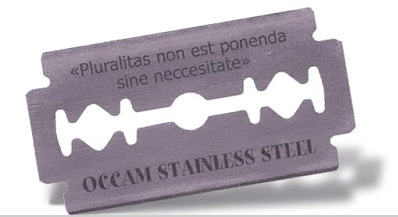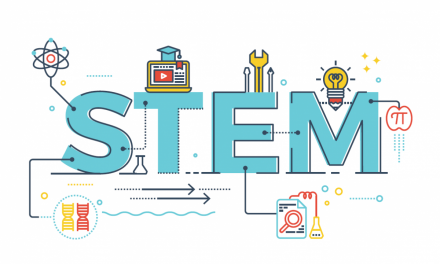Bitcoin, Blockchain, Occam and Hype, Oh My!

By Quentin Samelson, Sr. Managing Consultant, Global Business Services at IBM
Maybe it doesn’t hold true for every new technology, but the Gartner “hype cycle”[1] provides a useful way to describe the adoption of most major new technologies, especially those that catch the public eye. With blockchain, it’s hard to tell exactly where we are – either sliding down from the “Peak of Inflated Expectations” to the “Trough of Disillusionment,” or climbing back up from the Trough via the “Slope of Enlightenment.” Bitcoin and other cryptocurrencies have added an extra edge of volatility and uncertainty to the usual maturity curve.
Anyone not caught up in the early hysteria around bitcoin could see that some of the expectations around blockchain in general, and cryptocurrencies in particular, were well beyond reasonable. Even those of us who were working with more prosaic applications – to solve major interparty problems in finance, the supply chain, and other areas – could tell that some companies wanted blockchain bragging rights almost as much as they wanted to solve those problems. At the same time, we could tell that many of the companies investing in private blockchains were onto something very significant – a technology that is beginning to produce considerable benefits for both businesses and consumers.
Hype is real, and it does sometimes lead people, and organizations, to make questionable decisions. I’m troubled, however, at a recent line of reasoning about blockchain that concludes that “because there has been hype associated with blockchain, blockchain technology is useless.”[2] Sometimes these articles correctly point to issues with cryptocurrencies and assume that the entire technology is without merit; sometimes they misstate some aspect of the technology and then base a flawed judgment on that; but a lot of their argument seems to be: “our unreasonable expectations were not fulfilled; therefore, you should avoid this technology.” It feels as though social media’s casual disregard for facts and logic has invaded the world of technology.
This is especially unfair to private blockchains – the applications that are leveraging blockchain technology to save time and money, reduce frustration, and increase trust in multiparty[3] processes. The companies that are investing in blockchain technology now, to reduce the “friction” that so often occurs in these processes, will play a greater role in creating the new, more efficient, blockchain-enabled processes than those that sit back and wait.
So how should a CIO view blockchain? The McKinsey article2 cited earlier made a good start: “Organizations must start with a problem.” And, a bit farther along: “There must be a clear business case and target ROI.” Those would apply to any IT project. But the authors misquoted and misapplied Occam’s Razor to say that for blockchain to be a practical solution, “it must be the simplest solution available.”[4] (That idea, if valid, would suggest that we abandon nearly every feature of modern life, which relies on complex electronics and machinery, and the products that are built with those tools.) Indeed, we find that in our quest to solve complex problems, we discover that only complex solutions[5] actually work in practice.
But in that disconnect we can find a starting point for the right way to make a technology decision. For example, look at the way we (individuals) choose a vehicle: Why do we drive cars instead of horse-and-buggies? Because a horse-and-buggy doesn’t meet our requirements for speed, comfort, lack/ease of maintenance, and other criteria. Perhaps we should then select the simplest solution that meets our requirements? Some people do choose their vehicles that way – stripped down to the basics, with the smallest number of accessories and options available. But most of us don’t; we have priorities beyond simply satisfying requirements – greater power, more comfort or features, etc. I’ll propose that we once we find a range of relatively similar solutions that meet our requirements, we choose the solution that maximizes our perceived overall benefit within the parameters of our budget.
But blockchain is a new and different technology. How do we evaluate a new technology as part of the decision? Going back to our vehicle choice: why would we choose a diesel, hybrid or electric vehicle rather than a standard internal combustion engine vehicle? (Yes, sometimes it’s because people want to have the newest and shiniest technology in their garage; and yes, that’s understandable for individuals but hard to defend for corporations.) Most of us we select an alternative technology either because we have one overwhelming priority (e.g. environmental friendliness) that is only satisfied by that alternative, or because we have a set of priorities (possibly conflicting to some degree, like “good gas mileage but with lots of cargo space”) that are best satisfied by that technology.
And that’s where blockchain comes in, because it does certain things far better than any competing technology. Blockchain’s compelling features are more than just the “chain of blocks” that gives the technology its name. One way to describe it is through this combination of features:
- A shared, common ledger that provides a single source of truth, combined with advanced security and privacy features.
- Time-stamped, immutable (unchangeable) transactions that are synchronized across the network.
- Consensus-based, audit-able transactions. The rules are known (and often are developed by the original participants in the network), and they are automatically executed by the smart contract.
The combination of these features means that blockchain often provides the best, if not the only, solution to some of the most time-consuming and frustrating business problems – the problems that have defied solution up till now.
Frequently these problems boil down to a lack of trust – not necessarily distrust of one party’s business partners, but rather distrust of the process itself or the data within the process. (For instance, think about the number of forms that have to be filled out, often with redundant information that will then be verified multiple times, when you purchase a car. Most of the forms are the same whether you buy from a sketchy used car dealer or your own parents. The intent of the process is to ensure that title for the car is properly validated and documented – but filling out forms manually almost ensures that the data needs to be checked repeatedly. Instead, a blockchain-based process using validated data could complete the process in a few minutes, if not seconds.)
Our own blockchain experts will ask more questions than these, but these four are a good start:
- Does the process involve three or more parties? (If the answer is no, the process can likely be improved with more conventional means.)
- Is there significant “friction” in the current process? In other words, does the process take too long, cost too much, or cause excessive labor? Is it frustrating to use? (If the answer is no, there may not be a good business case to build a new application.)
- Will improving the process bring value to all of the parties involved? (If no, you may find it difficult to persuade all of the different parties to participate in creating the new process, agreeing on data standards, etc.)
- Are there well-defined business rules that govern the process? Or, are we confident that we can define the rules the ought to govern the process? (If the answer is no, additional work may need to be done before we can confirm that blockchain is appropriate.)
As more and more blockchain-based applications[6] gain traction in the real world, coverage of the subject is becoming more even-handed.[7] Due diligence should always be exercised when you see hype around a new technology, or a disconnect between expectations and reality. Projects using that new technology deserve greater attention than those relying on more mature capabilities. But don’t walk away from a promising new technology that is already producing benefits, just because there is still some excessive exuberance in the market. Doing that could mean that you’ll become a follower instead of a leader in developing the processes that will govern the next major developments in your industry.
[1] See https://en.wikipedia.org/wiki/Hype_cycle , or just do an internet search on “Hype Cycle” or “Amara’s Law.”
[2] For instance: https://www.wired.com/story/theres-no-good-reason-to-trust-blockchain-technology/ ;
https://www.mckinsey.com/industries/financial-services/our-insights/blockchains-occam-problem ; or https://medium.com/@kaistinchcombe/decentralized-and-trustless-crypto-paradise-is-actually-a-medieval-hellhole-c1ca122efdec
[3] A multiparty process is any process that involves three or more parties, where a party may be a company, an individual, a governmental agency, a bank, an auditor, etc. Most processes outside the four walls of a company are, in fact, multiparty. Even a simple shipment usually involves a shipper, a transport company, and a recipient… and often a customs agency or two, a second or even a third transport company, etc.
[4] Occam’s Razor is often called the principle of parsimony. In evaluating competing hypotheses, it essentially states that simpler solutions are more likely to be correct than complex ones. But although we talk about “solving problems” via technology, selecting the best technology is a different proposition than trying to identify the best hypothesis to explain a scientific phenomenon.
[5] In this connection, I rather like H.L. Mencken’s maxim: “For every complex problem there is an answer that is clear, simple, and wrong.”
[6] See, for instance: https://www.forbes.com/sites/astanley/2018/10/08/ready-to-rumble-ibm-launches-food-trust-blockchain-for-commercial-use/#560e586d7439 ; https://www.reuters.com/article/us-blockchain-congo-cobalt-electric/ford-and-ibm-among-quartet-in-congo-cobalt-blockchain-project-idUSKCN1PA0C8 ; and https://www.coindesk.com/insurance-ratings-bureau-pilots-ibm-blockchain-for-automatic-reporting .
[7] This article from Modern Materials Handling, describing a quick way to assess potential blockchain use cases: https://www.mmh.com/article/are_you_fit_for_blockchain; and this summary of a recent Deloitte survey: https://www.sourcetoday.com/market-insights/blockchain-overhyped ; and
See https://en.wikipedia.org/wiki/Hype_cycle , or just do an internet search on “Hype Cycle” or “Amara’s Law.”
[1] For instance: https://www.wired.com/story/theres-no-good-reason-to-trust-blockchain-technology/ ;
https://www.mckinsey.com/industries/financial-services/our-insights/blockchains-occam-problem ; or https://medium.com/@kaistinchcombe/decentralized-and-trustless-crypto-paradise-is-actually-a-medieval-hellhole-c1ca122efdec
[1] A multiparty process is any process that involves three or more parties, where a party may be a company, an individual, a governmental agency, a bank, an auditor, etc. Most processes outside the four walls of a company are, in fact, multiparty. Even a simple shipment usually involves a shipper, a transport company, and a recipient… and often a customs agency or two, a second or even a third transport company, etc.
[1] Occam’s Razor is often called the principle of parsimony. In evaluating competing hypotheses, it essentially states that simpler solutions are more likely to be correct than complex ones. But although we talk about “solving problems” via technology, selecting the best technology is a different proposition than trying to identify the best hypothesis to explain a scientific phenomenon.
[1] In this connection, I rather like H.L. Mencken’s maxim: “For every complex problem there is an answer that is clear, simple, and wrong.”
[1] See, for instance: https://www.forbes.com/sites/astanley/2018/10/08/ready-to-rumble-ibm-launches-food-trust-blockchain-for-commercial-use/#560e586d7439 ; https://www.reuters.com/article/us-blockchain-congo-cobalt-electric/ford-and-ibm-among-quartet-in-congo-cobalt-blockchain-project-idUSKCN1PA0C8 ; and https://www.coindesk.com/insurance-ratings-bureau-pilots-ibm-blockchain-for-automatic-reporting .
[1] This article from Modern Materials Handling, describing a quick way to assess potential blockchain use cases: https://www.mmh.com/article/are_you_fit_for_blockchain; and this summary of a recent Deloitte survey: https://www.sourcetoday.com/market-insights/blockchain-overhyped ; and














